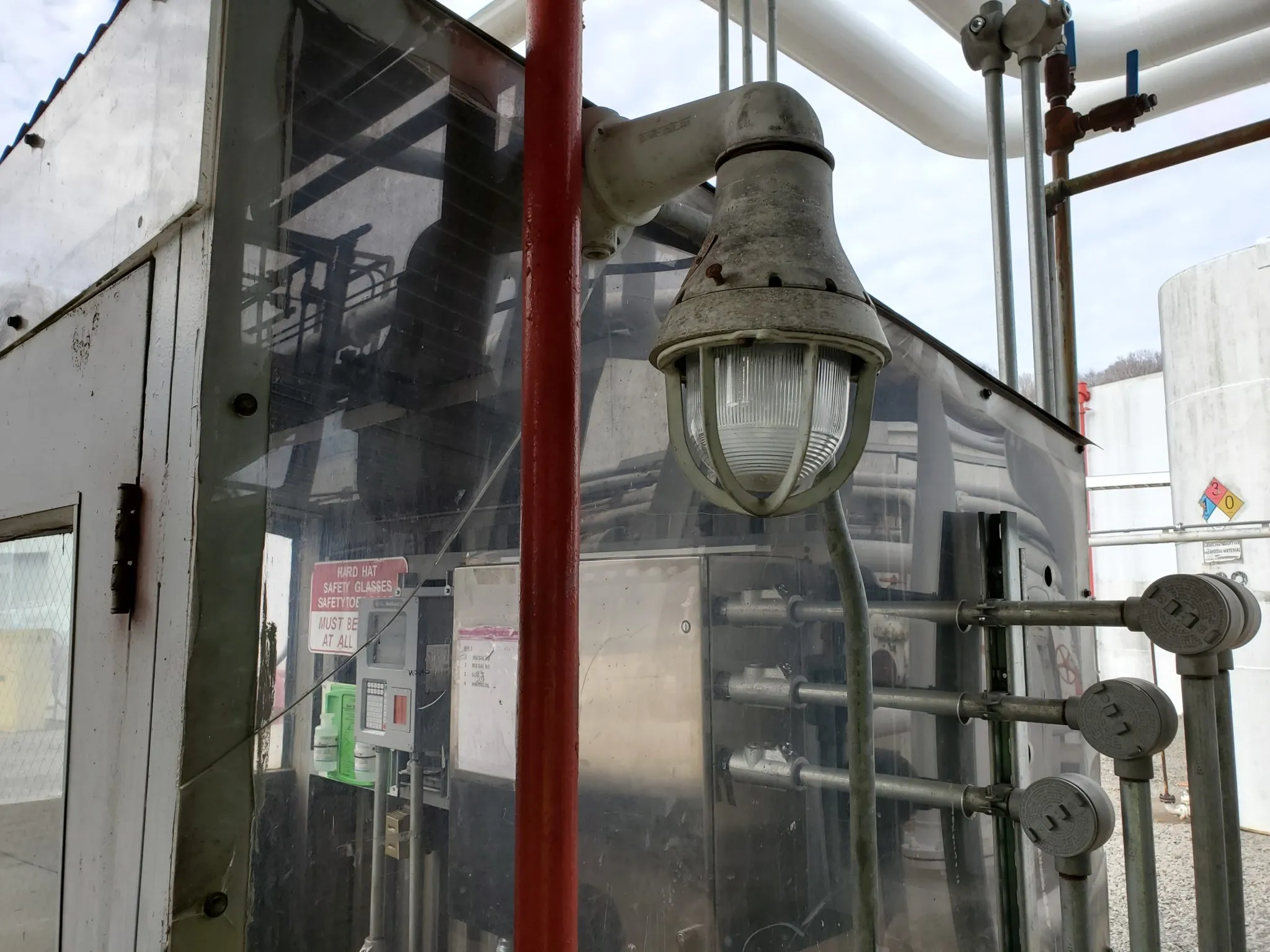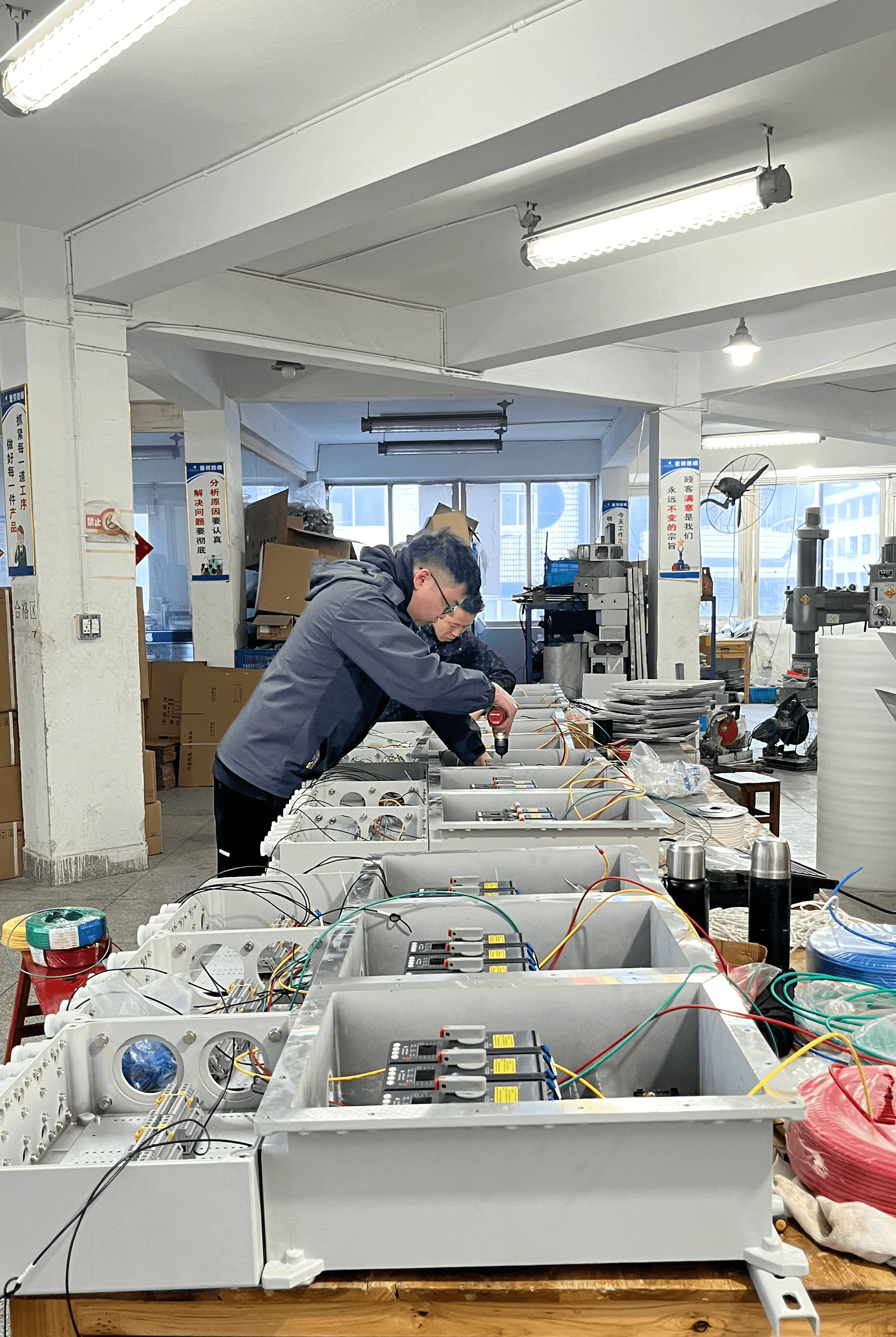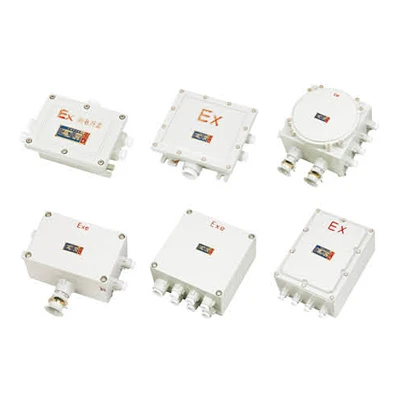Introduction

In a world where safety is paramount, understanding flame proof equipment becomes essential for various industries. Flame proof equipment is designed to prevent the ignition of flammable substances in hazardous environments, making it crucial for workplaces that deal with explosive materials. By ensuring that proper flameproof solutions are in place, industries can protect their personnel and assets from potential disasters.
Understanding Flame Proof Equipment
Flame proof equipment refers to devices and systems engineered to contain any explosion or fire that may occur within them. This specialized apparatus is built with materials and designs that can withstand high temperatures and pressures, effectively preventing flames from escaping into the surrounding atmosphere. So, what is a flame proof apparatus? It serves as a barrier between dangerous conditions and safe operational environments, ensuring compliance with stringent safety standards.
Importance of Flame Proof Safety
The importance of flame proof safety cannot be overstated; it safeguards lives and property in potentially volatile settings. Industries such as oil and gas, chemical manufacturing, and mining face significant risks if flame proof equipment is not utilized properly. By adhering to flameproof protection methods, companies can mitigate hazards associated with flammable gases or dusts while also complying with regulatory requirements.
Overview of Flame Proof Applications
Flame proof applications span across diverse sectors where the risk of ignition exists. For instance, areas like refineries require specialized gear to protect workers from explosive atmospheres created by volatile chemicals. Additionally, understanding where flame proof equipment is required helps businesses implement effective safety measures tailored to their specific operational needs—ensuring everyone goes home safe at the end of the day.
What is a Flame Proof Apparatus?

Flame proof apparatus plays a critical role in ensuring safety in environments where flammable gases or dust may be present. These specialized devices are designed to contain any internal explosions and prevent flames from escaping, thereby protecting both personnel and equipment. Understanding what constitutes a flame proof apparatus is essential for industries that prioritize safety in hazardous locations.
Definition and Purpose
A flame proof apparatus is an electrical device constructed to withstand and contain explosions originating within its housing. The primary purpose of such equipment is to prevent the ignition of surrounding flammable materials, effectively creating a safe operational environment. In essence, these devices are your frontline defense against potential hazards associated with combustible substances.
How It Works
The operation of flame proof apparatus hinges on its robust design, which includes thick walls and tightly sealed components that can endure high-pressure conditions. When an explosion occurs inside the device, the flames and gases are contained within, preventing them from escaping into the surrounding atmosphere. This containment not only protects nearby personnel but also minimizes damage to other equipment in the vicinity.
Common Examples in Use
Common examples of flame proof equipment include junction boxes, motors, lighting fixtures, and control panels used in industries like oil and gas, chemical manufacturing, and mining. For instance, flameproof motors are specifically designed to operate safely in explosive atmospheres while maintaining efficiency and reliability. By utilizing these specialized devices across various sectors, businesses can significantly reduce risks associated with fire hazards while ensuring compliance with safety regulations.
Where is Flame Proof Equipment Required?

Industries Mandating Flame Proof Gear
Several industries mandate the use of flame proof gear due to the inherent risks involved. The oil and gas industry, for instance, frequently encounters flammable gases and liquids, making flame proof equipments essential for safe operations. Similarly, chemical manufacturing facilities handle volatile substances that necessitate stringent safety measures including the installation of what is a flame proof apparatus?
In addition to oil and gas and chemicals, industries such as mining, pharmaceuticals, and food processing also require flameproof equipment to mitigate risks associated with dust or vapors that could ignite. These sectors must adhere to regulations that specify the implementation of protective measures like FLP in electrical devices to ensure safe operations. Ultimately, understanding where flame proof equipment is required can save lives and protect valuable assets.
Key Locations for Installation
Identifying key locations for installing flame proof equipment is vital for effective risk management. Common sites include production areas where flammable materials are processed or stored—think storage tanks or chemical mixing zones where accidents can occur if proper precautions aren't taken. Additionally, areas like loading docks or refineries are prime candidates for what is a flame proof apparatus? since they often involve transferring hazardous materials.
Moreover, maintenance rooms housing electrical panels should be equipped with FLP solutions to prevent potential ignitions from sparks or overheating components. Hazardous zones classified as Zone 1 or Zone 2 (where explosive atmospheres may occur) are particularly critical installations for any type of flameproof protection method you might consider. By strategically placing these systems in high-risk areas, organizations can significantly reduce their chances of catastrophic incidents.
Compliance with Safety Standards
Compliance with safety standards regarding the use of flame proof equipment cannot be overstated; it’s not just about following laws but ensuring a culture of safety within an organization. Various regulatory bodies set forth guidelines dictating how and where these protective measures should be implemented—standards such as ATEX in Europe and NEC in North America outline specific requirements for industries employing what is a flame proof apparatus?
Organizations must regularly assess their compliance status by conducting audits on their existing setups to ensure they meet current standards related to FLP in electrical devices and other safety protocols. Failure to comply can lead not only to legal ramifications but also endanger lives within potentially explosive environments—an outcome no business wants on its conscience! By prioritizing adherence to these standards, companies can foster safer workplaces while minimizing operational risks associated with hazardous materials.
Understanding FLP in Electrical Devices

When it comes to flame proof equipment, understanding the concept of FLP is essential for ensuring safety in hazardous environments. FLP stands for Flameproof and refers to a specific type of protection used in electrical devices that operate in potentially explosive atmospheres. This designation indicates that the equipment is designed to contain any explosion that may occur within its housing, preventing flames or hot gases from escaping and igniting surrounding flammable materials.
What Does FLP Mean?
FLP, or Flameproof, is a term used primarily in industries where explosive gases or dust are present, such as oil and gas, chemical manufacturing, and mining. Essentially, when we ask What is FLP in electrical? we're referring to equipment engineered to withstand internal explosions while keeping the external environment safe. This means that if an ignition occurs inside the device due to a fault, it won't lead to catastrophic results outside its casing.
Key Features of FLP Equipment
FLP equipment boasts several key features that make it indispensable for flame proof applications. First and foremost is its robust construction; these devices are made from durable materials capable of withstanding high pressures generated during an explosion. Additionally, flame proof apparatuses often include specialized seals and gaskets designed to prevent any gases from leaking out—ensuring compliance with regulations regarding where flame proof equipment is required.
Another notable feature of FLP devices is their ability to operate efficiently under extreme conditions without compromising safety standards. This reliability makes them suitable for various applications across multiple industries—from oil rigs offshore to chemical plants onshore.
Benefits of Using FLP Solutions
The benefits of using FLP solutions extend beyond mere compliance; they significantly enhance workplace safety and operational efficiency as well. By investing in flame proof equipments designed with advanced protection methods, companies can drastically reduce the risk of accidents caused by explosions or fires—ultimately safeguarding lives and property alike.
Moreover, utilizing what is a flame proof apparatus? leads to lower insurance costs since insurers recognize the reduced risk associated with employing such technologies. In addition, businesses can enjoy increased productivity due to minimized downtime caused by incidents or regulatory inspections related to non-compliance with safety standards.
In conclusion, understanding what constitutes FLP in electrical devices provides valuable insights into how organizations can protect themselves against potential hazards while maintaining operational integrity. As industries continue evolving towards greater automation and complexity, embracing advanced flameproof protection methods will be crucial for future success.
Flameproof Protection Methods Explained

When it comes to flame proof equipment, understanding the various protection methods is crucial for ensuring safety in hazardous environments. These methods are designed to prevent ignition of flammable gases or dust, safeguarding both personnel and property. By exploring these protection methods, we can better appreciate their importance in industries where flameproof safety is paramount.
Types of Flameproof Protection
Flameproof protection methods can be categorized into several types, each tailored for specific applications and environments. The most common types include explosion-proof enclosures, intrinsic safety, and purged and pressurized systems. Each type serves a unique purpose: explosion-proof enclosures contain any potential explosion within the equipment itself; intrinsic safety limits energy levels to prevent ignition; while purged systems use clean air to dilute flammable substances around electrical devices.
Understanding What is a flame proof apparatus? hinges on recognizing these diverse protection strategies. For instance, an explosion-proof enclosure might be used in oil refineries where flammable vapors are prevalent. On the other hand, intrinsic safety is often applied in laboratories handling volatile chemicals, emphasizing the need for tailored solutions across different sectors.
Comparing Different Methods
When comparing different flameproof protection methods, it's essential to consider factors such as effectiveness, cost-efficiency, and ease of implementation. Explosion-proof equipment is generally more robust but may require higher initial investment compared to intrinsic safety solutions that offer lower costs with limited application scope. Purged systems can be very effective but may involve ongoing operational costs due to air supply requirements.
Moreover, Where is flame proof equipment required? plays a significant role in determining which method suits your needs best. For example, industries like petrochemicals might prioritize explosion-proof enclosures due to their high-risk nature while pharmaceutical companies could lean towards intrinsic safety measures for sensitive environments. Ultimately, selecting the right method involves evaluating both the operational context and compliance with relevant safety standards.
Selecting the Right Protection Method
Choosing the appropriate flameproof protection method requires a thorough understanding of specific industry needs along with regulatory requirements surrounding What is FLP in electrical? applications. Factors such as temperature classification and potential explosive atmospheres must be assessed when selecting equipment that adheres to these standards effectively.
In practice, organizations should conduct risk assessments that evaluate all possible scenarios before deciding on a particular method of flameproof protection. Consulting with experts who understand what constitutes effective flame proof equipments can also provide valuable insights into compliance and best practices for installation and maintenance. Remember that investing time in choosing the right approach not only protects assets but also enhances overall workplace safety.
Best Practices for Using Flame Proof Equipment

When it comes to flame proof equipment, adhering to best practices is paramount for ensuring safety and longevity. These guidelines not only help in preventing hazardous incidents but also optimize the performance of the equipment. Understanding these best practices can significantly enhance operational efficiency and compliance with industry standards.
Installation Guidelines
Installing flame proof equipment requires meticulous attention to detail and adherence to specific protocols. First, it's crucial to assess the environment where the flame proof apparatus will be situated; this involves identifying potential ignition sources and ensuring adequate spacing between devices. Additionally, proper sealing of joints and connections is essential to prevent any potential leaks that could compromise safety.
Moreover, when considering where flame proof equipment is required, installation should align with local regulations and industry standards. Always consult manufacturer specifications during installation; these documents provide vital information on how to properly set up your flameproof protection method. Lastly, conducting a thorough risk assessment prior to installation can help identify any unique challenges that may arise in your specific application.
Maintenance Tips
Regular maintenance of flame proof equipment is critical for its effectiveness and reliability over time. Schedule routine inspections that focus on checking seals, gaskets, and other critical components that could wear down or degrade over time due to environmental factors or mechanical stress. Implementing a maintenance log can also aid in tracking service history and identifying recurring issues.
In addition, understanding what FLP means—Flameproof Limited Protection—can guide you in maintaining these systems effectively by ensuring all elements are functioning as designed. Cleaning procedures should be established as well; dirt or residues can interfere with the functionality of flameproof protection methods if not addressed promptly. By prioritizing maintenance, you ensure your flame proof apparatus remains compliant with safety standards while reducing the risk of unexpected failures.
Training for Personnel
Training personnel who operate or maintain flame proof equipment is essential for fostering a culture of safety within an organization. Employees should be well-versed in what constitutes a flame proof apparatus and understand its importance in preventing hazardous situations in high-risk environments like chemical plants or oil refineries. Regular training sessions not only educate staff about operational procedures but also emphasize the significance of compliance with safety regulations regarding where flame proof equipment is required.
Moreover, training should cover emergency response protocols related to potential failures or malfunctions of FLP solutions; knowing how to react swiftly can mitigate risks significantly during critical moments. Incorporating hands-on training alongside theoretical knowledge ensures personnel are comfortable working with complex systems while reinforcing their understanding of different flameproof protection methods available on-site. Ultimately, investing in comprehensive training enhances confidence among staff members while promoting safe practices throughout operations involving flame proof equipments.
Conclusion

In wrapping up our exploration of flame proof equipment, it’s clear that understanding their functionality and importance is crucial for safety in hazardous environments. Flame proof apparatuses are designed to contain and cool any internal explosions, making them essential in industries where flammable gases or dust are present. The significance of flame proof safety cannot be overstated, as it protects both personnel and property from potentially catastrophic incidents.
Key Takeaways on Flame Proof Equipment
To summarize, flame proof equipment serves a vital role in various industries by preventing the ignition of explosive atmospheres. Knowing what is a flame proof apparatus? is fundamental; these devices are engineered to withstand internal pressures and prevent flames from escaping. Additionally, understanding where flame proof equipment is required can help organizations comply with safety regulations while fostering a culture of safety.
Future Trends in Flame Proof Safety
Looking ahead, the future trends in flame proof safety will likely lean towards more advanced technologies incorporating smart sensors and IoT capabilities. These innovations will enhance monitoring systems for detecting potential hazards before they escalate into dangerous situations. Furthermore, as industries evolve, so will the standards for what is FLP in electrical applications—ensuring that all new developments meet stringent safety requirements.
How Jinrong Leads in Flame Proof Solutions
Jinrong stands out as a leader in supplying top-notch flame proof solutions tailored to meet diverse industry needs. Their commitment to quality ensures that each piece of equipment not only meets but exceeds regulatory standards regarding what is the flameproof protection method? This dedication to innovation and excellence positions Jinrong at the forefront of providing reliable flame proof equipments that enhance workplace safety.

